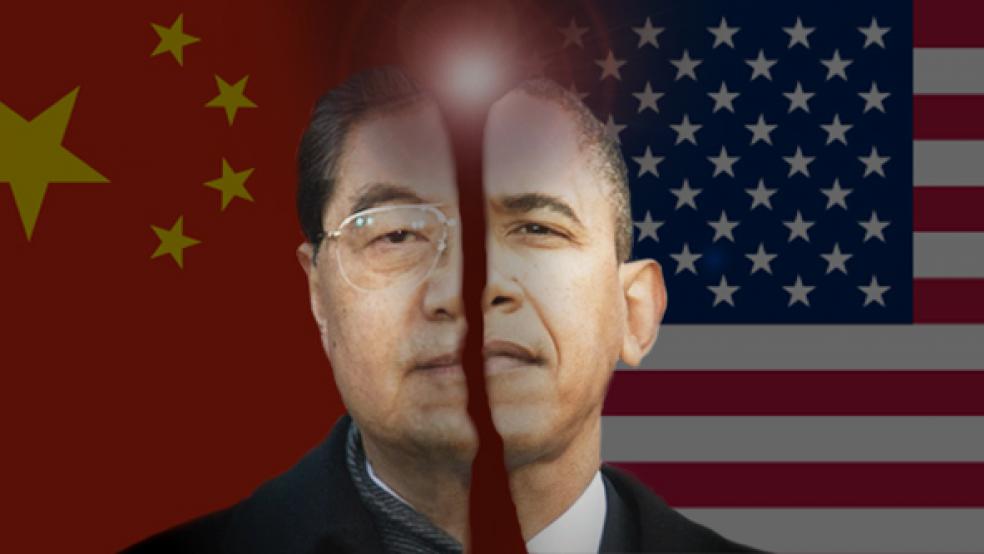For years, American workers and business interests have warily viewed China as an archrival, competing with the U.S. for manufacturing, global investment and the role of world superpower.
Often tense U.S.-Chinese government relations have been marked by moments like when Chinese President Hu Jintao called the dollar-based international financial system "a thing of the past" and predicted the rise of the yuan. Or when Secretary of State Hillary Clinton said Chinese leaders were on "a fool's errand" in trying to resist democracy.
But wait a minute. If the United States and China are such bitter rivals, how do you explain the Made-in-China iPod? This quintessential American product -- created by an iconic high-tech U.S. company – is assembled in China, but its economic value largely goes to the United States. An analysis found that of $1 billion in wages paid for iPod-related jobs in 2006, nearly $750 million went to American workers and the remainder to those outside the U.S. "Although the iPod is assembled in China, the value added in China is very low," the authors wrote in the May Journal of International Commerce and Economics. "This case provides evidence that innovation by a U.S. company at the head of a global value chain can benefit both the company and U.S. workers."
This is a dramatic – and little appreciated -- illustration that when you scratch the surface of the post-modern economic relationship between China and the U.S., you are just as likely to discover interdependence between the two countries as competition. And as the United States continues to struggle to recover from the worst recession since World War II, this symbiotic relationship could become increasingly important to Americans.
"The economies are remarkably intertwined and interdependent and complementary," Charles Freeman, the Freeman Chair in China studies at the Center for Strategic and International Studies, told The Fiscal Times, “If you look at the trading relationship as it exists now and has for the past 10 to 15 years, it's hard to find that many sectors in which there's a direct compete."
China is the U.S. government’s biggest creditor. And when the U.S. economy or dollar declines, China loses value in its $1.3 trillion of Treasury investments. American customers buy the bulk of Chinese clothes, toys and other inexpensive products -- and China is the third-largest market for U.S. exports. Moreover, many of the Chinese exports demonized by U.S. critics actually return more value to U.S. companies and workers than to those across the Pacific, as in the case of the iPod. Bottom line: the economic fates of China and the U.S. are inextricably linked.
"The linkages are extensive and run deep, and with each passing day get deeper through trade, through direct investment, immigration, financial flows," said Mark Zandi, chief economist at Moody's Analytics. "Instead of pulling away from China, we need to embrace them as tightly as possible."
That's not to say the path forward is easy. U.S. companies see the 1.3 billion Chinese population as a largely untapped market for their goods and services, and are being increasingly vocal about barriers to entry. Critics are also challenging unfair trade practices -- with some success -- and lower environmental and labor standards that they say give Chinese businesses an unjust edge.
On Tuesday, China agreed to end government subsidies for wind-power companies worth hundreds of millions of dollars, in response to a U.S. complaint to the World Trade Organization. "Much more must still be done to enforce our trade laws consistently and create good jobs here at home," said AFL-CIO President Richard Trumka in a statement. "We must work to end unfair trade practices, including currency manipulation, export subsidies and the suppression of workers' rights both here and abroad."
But the notion of a more harmonious, symbiotic relationship between the two countries can only go so far. Both governments are encouraging research and development to foster cutting-edge technology at home, and U.S. business interests are eyeing China’s fast-growing middle class as a potentially lucrative new market for their products that would compete with Chinese-made goods. The two countries are certain to increasingly butt heads in the future in capital intensive, high-tech fields.
What’s more, the U.S. once dominated the manufacturing and marketing of laptops and electronics in this country, but in recent years, the Chinese have been flooding the zone with cheap imports. But those products are now considered low-to-mid-range technologies, and the real prizes for either country are the more profitable and sophisticated biomedical devices, software, and aerospace and industrial machinery.
"As China continues to move up the value added ladder -- including R&D, design, distribution and even financing -- to more capital and technology intensive manufacturing, we do become more and more competitive," Harry Harding, dean of the Batten School at the University of Virginia, told The Fiscal Times. "As China becomes more powerful that sense of competition increases."
There's no denying that China is a more viable competitor on all fronts than previous rivals like Japan, with scant military might, or the Soviet Union, with a weak economy, Harding said. Recent comments from Chinese and U.S. leaders attempt to diffuse these tensions in contrast to the previous 18 months of saber-rattling, said Chris Nelson, editor of the Nelson Report at consulting firm Samuels International,. He was pointing to friendlier statements at this month's Shangri-La Dialogue, the annual Asian security conference
"Both governments realize it doesn't help the stability of the international economy and financial system to have the big money think the U.S. and China are ready to pop at each other or launch some kind of currency or trade war," Nelson said.
While China's currency is widely viewed as undervalued, an adjustment upwards would push jobs from China into countries with cheaper labor, such as Bangladesh, Vietnam and Indonesia. It might reduce the bilateral U.S.-China trade deficit, experts say, but that would not help to bring down the U.S. unemployment rate, which just inched up to 9.1 percent. "It's a dangerous fantasy that a lot of people have put forward, that this is the solution to restoring the manufacturing base in the rust belt," Freeman said.
As for Chinese currency, while the yuan may eventually become appealing as a reserve currency, there are few viable alternatives to dollars and U.S. debt for risk-averse global investors. China would hurt itself more than the U.S. by trying to sabotage the dollar or roil the Treasury market by vastly downsizing its holdings of U.S bonds and notes.
China this month urged Congress and the White House to get its fiscal house in order and begin reducing its massive debt. China is by far the top holder of U.S. debt, but it cut its holdings of Treasury securities in March for the fifth month in a row. Its holdings fell to $1.145 trillion in March, down 9.2billion from the previous month.
"The reality is, if I owe you a dollar I have a problem. If I owe you $1.3 trillion, you have the problem," Freeman said, referring to the Chinese. "They could dump all their Treasuries into international markets and effectively get pennies on the dollars for them. It's a problem for us but it's a bigger problem for them."
Related Links:
The Next China, A Powerful Consumer Society
China Quietly Expands Its Grip on U.S. Manufacturing
The Real Reason China Should Worry America


